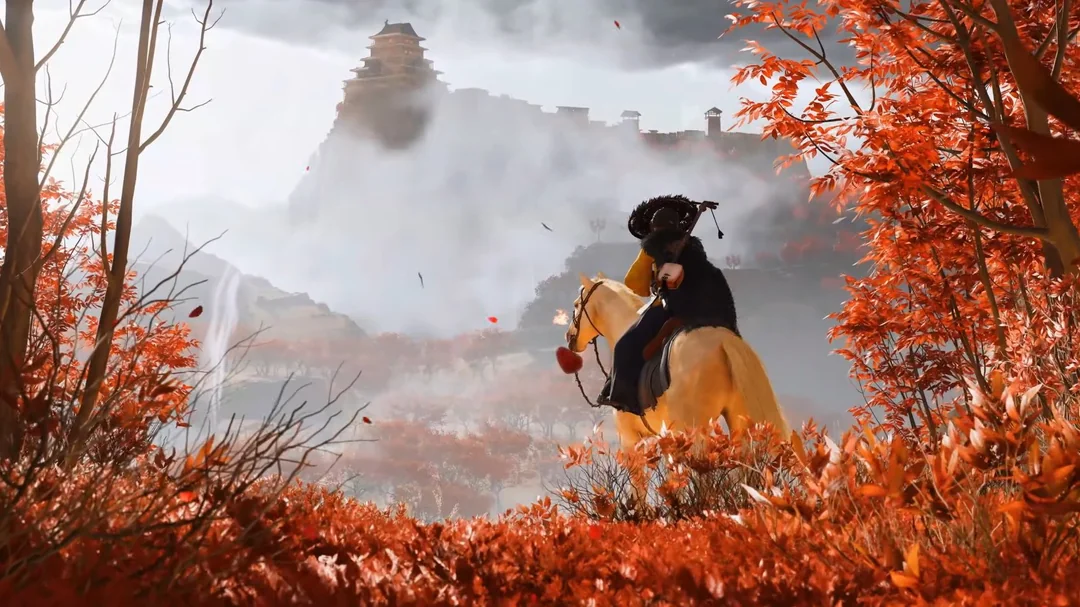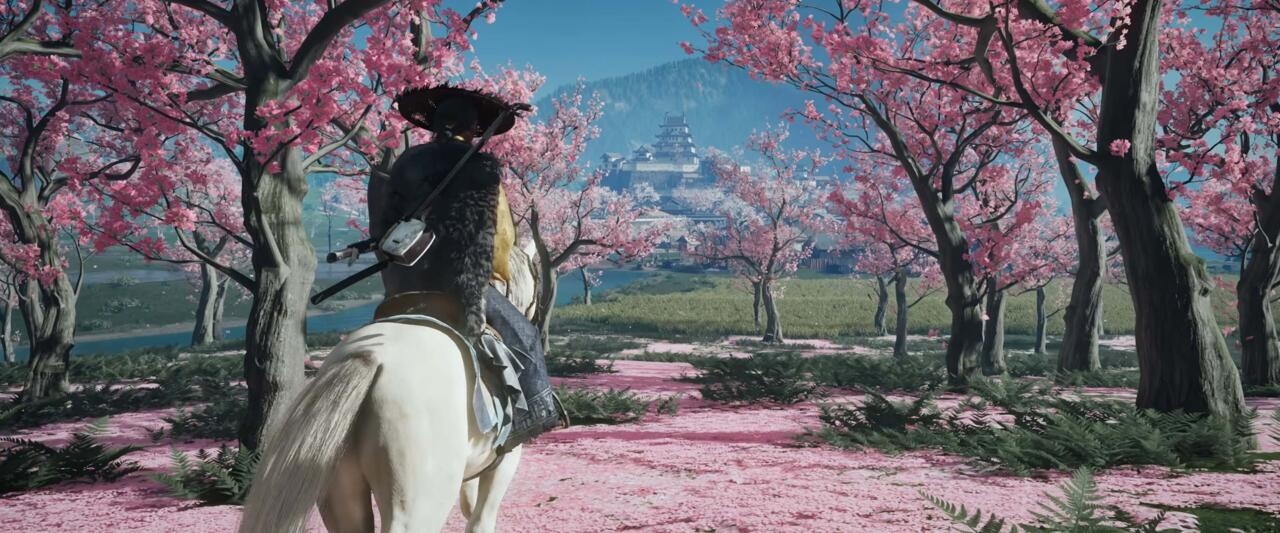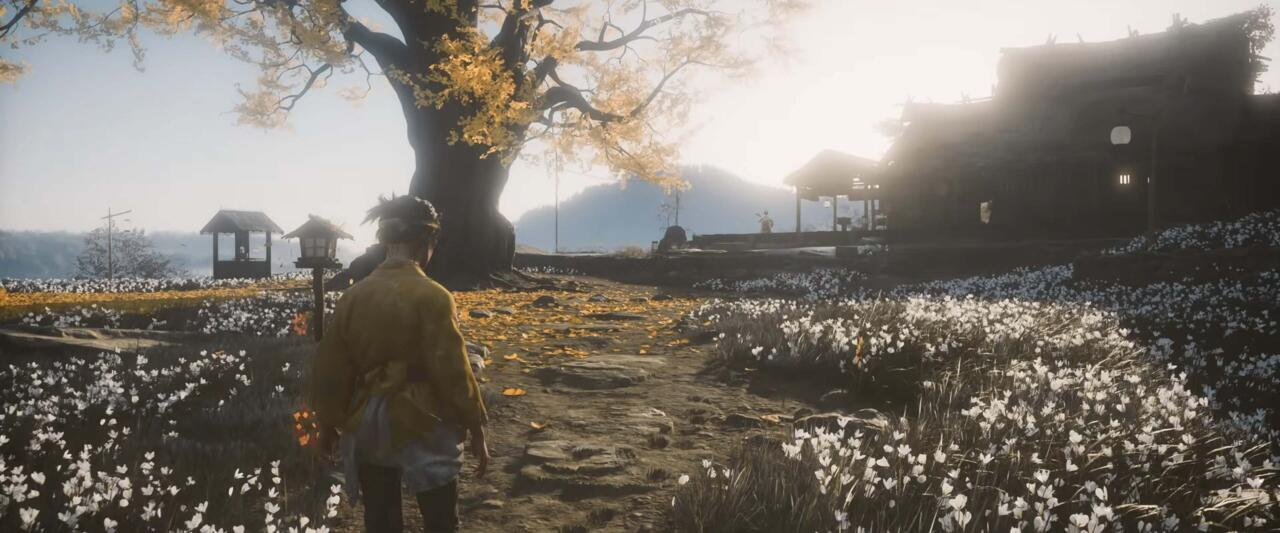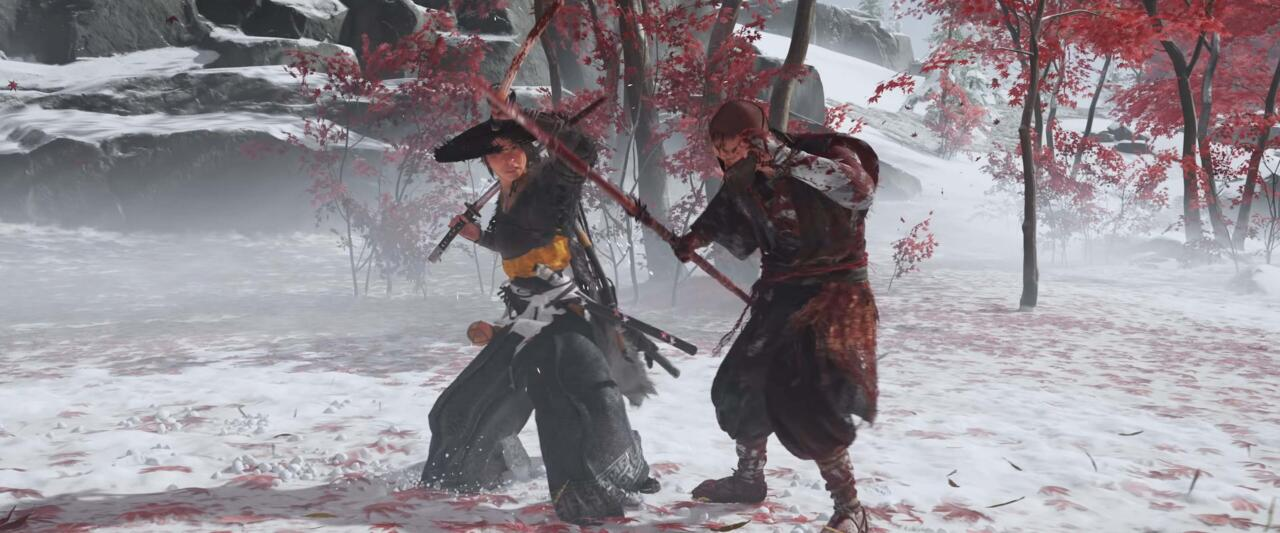When Sucker Punch Productions delivered Ghost of Tsushima, they didn’t just give us an open-world action game set in feudal Japan; they redefined it. It had a cinematic storytelling within an expansive world, proving that side activities didn’t need to clutter a map with an overwhelming array of icons. Ghost of Tsushima quickly carved out a place in the hearts of gamers, setting a high bar for any potential follow-up. The anticipation for Ghost of Yotei, its sequel, has been palpable, and after pouring 50 hours into Atsu’s vengeful journey across Hokkaido, I can confidently say that not only has it met those towering expectations, but it has gracefully sailed beyond them.

A Vengeful Heart’s Journey
Ghost of Yotei presents a narrative built on the timeless foundation of revenge. We are introduced to Atsu, a formidable protagonist whose family has been cruelly murdered, propelling her on a relentless quest to hunt down their killers across the harsh, yet beautiful, northern reaches of Ezo. While the premise of a vengeance tale is as old as human storytelling itself, Ghost of Yotei elevates it with great writing and almost a profound depth.
This is, without a doubt, the most compelling tale of vengeance I have ever experienced within a video game. It transcends simple retribution, delving into complex philosophical questions about the nature of revenge, its cost, and its impact on the soul of the one seeking it. Through integrated flashbacks and poignant encounters with various characters along her arduous path, Atsu’s journey becomes a rich tapestry of emotional and moral exploration. The developers’ deep admiration for Japanese history, culture, and especially the cinematic genius of Akira Kurosawa, is evident in every brushstroke of the narrative. From the character motivations to the dramatic beats, the influence is clear, lending an authentic and weighty feel to the proceedings. Moreover, Ghost of Yotei paces its story missions, ensuring a flow that feels consistently engaging and impactful, never rushed nor drawn out, allowing each revelation and confrontation to land with maximum effect. It’s a journey that doesn’t just ask you to kill, but to understand why, and what that understanding means for Atsu.

The Art of the Deadly Dance
At first glance, the combat system in Ghost of Yotei might appear familiar, mirroring the fundamental tenets of many action games: a light attack, a heavy attack, and a block/parry mechanic. However, beneath this surface lies a more intricate and satisfying system that transforms every encounter into a dynamic and tactical dance. The key innovation lies in the nuanced interplay between different weapons and enemy archetypes. Simply put, certain weapons are devastatingly effective against others, forcing players to constantly adapt and switch weapons mid-combat to break enemy defenses and exploit weaknesses. This isn’t just a gimmick; it’s a core mechanic that rewards mastery and quick thinking, keeping every duel fresh and exhilarating. After spending over 50 hours immersed in Ezo, the combat remains incredibly fun and engaging, a testament to its depth and the highest praise I can offer any action game.
Beyond the core swordplay, Ghost of Yotei offers players three distinct, yet equally viable, approaches to tackling enemy encounters, each feeling impactful and distinct. The first is the direct approach: drawing your weapon and plunging headfirst into a flurry of steel. This is where the weapon-switching shines, allowing for aggressive, yet calculated, engagements. The second path embraces the shadows, allowing Atsu to stealthily infiltrate enemy strongholds and eliminate foes one by one with swift, brutal assassinations. This stealth system is refined, providing a sense of predatory satisfaction that, dare I say, surpasses even the recent Assassin’s Creed Shadows in its execution and fluidity. Finally, there’s a third, uniquely cinematic option inspired by the masters themselves. Atsu can initiate a one-on-one duel with a formidable opponent, often leading to a dramatic, tense showdown. Depending on upgrades unlocked within the expansive skill trees, winning these duels can trigger a sequence where Atsu effortlessly dispatches multiple surrounding enemies, often while standing perfectly still, in a breathtaking display of precision and lethality that feels ripped straight from a classic Kurosawa film. These moments are not just powerful mechanically, but incredibly satisfying aesthetically, making you feel every bit the legendary warrior.

Purposeful Exploration
As an open-world game, Ghost of Yotei naturally comes packed with a wide array of activities beyond its compelling main narrative, but it’s how these activities are integrated and presented feels different from other games. The side quests, in particular, are exceptional. Far from being mere fetch quests or generic busywork, these are often as well-written as the primary storyline. They function as isolated, self-contained narratives that I found myself deeply invested in, each offering a unique glimpse into the lives and struggles of the people populating Ezo.
Even the missions focused on “people to kill”—often a monotonous task in other games—are imbued with surprising depth. These range from straightforward hunts for named individuals to expansive character arcs that flesh out the target’s motivations and backstory, transforming them from faceless antagonists into integral, often tragic, parts of Atsu’s world. This attention to detail makes the world feel incredibly alive and reactive to Atsu’s presence.
Furthermore, Ghost of Yotei is replete with smaller, more intimate activities, all presented without cluttering the map with overwhelming markers. Players are encouraged to explore organically, guided by the world itself. Animals, particularly the iconic foxes and birds, will subtly lead Atsu to points of interest, or one can purchase maps from merchants to uncover hidden locations. These activities are reflective of Japanese culture and Atsu’s journey. You might find yourself taking a contemplative bath in a hot spring, stirring profound internal reflections for Atsu, engaging in the meditative practice of chopping bamboo, or praying at ancient shrines. Every single one of these brief diversions feels natural and organic to Atsu’s character, her story, and the world she inhabits. They serve as welcome, short breaks from the grim journey of vengeance, offering moments of peace or self-reflection that enrich the overall experience.
Praying at shrines, in particular, is not just a thematic activity but also a source of skill points. These points can then be allocated across various skill trees, catering to different weapons and playstyles. Crucially, almost every skill I unlocked genuinely made Atsu feel more powerful, transforming her into an even more capable killing machine. This palpable sense of progression, of feeling truly powered up with each added skill point, is a rewarding feeling that many other open-world adventures often struggle to deliver.

A Canvas of Ezo’s Beauty
Ezo, the setting for Atsu’s epic journey, is nothing short of visually breathtaking. The environments are rendered with detail and artistic flair, creating a world that is consistently stunning. From expansive, verdant fields carpeted with delicate white flowers to the serene, snow-covered landscapes adorned with gracefully fallen pink leaves. No matter where you pause on the map, the scenery offers a moment of awe. The sheer beauty of the world encourages deliberate exploration, inviting players to simply stop, take in their surroundings, and appreciate the artistry on display.
Complementing the visual is a well crafted soundtrack that perfectly captures the essence of the Japanese era. The traditional instrumentation and evocative melodies enhance the emotional weight of Atsu’s story and immerse the player deeply into the historical setting. The synergy between the breathtaking visuals and the authentic audio design creates a sense of place, making you truly feel as if you are riding through 17th-century northern Japan. It’s an environment that doesn’t just serve as a backdrop but acts as a character in its own right, ever-present and unforgettable.
Conclusion
Ghost of Yotei is everything I had passionately hoped for in a sequel and then some. It builds upon the strong foundations laid by its predecessor, pushing the boundaries of what an open-world experience can be. It is unequivocally more beautiful, with a narrative that is far better written and profoundly engaging, and gameplay mechanics that feel even more refined and exhilarating. The careful integration of side activities—all feeling natural and purposeful to Atsu’s journey—further solidifies its status.
This is, without a doubt, the best open-world game released in the last couple of years, setting a new benchmark for narrative depth, combat fluidity, and environmental immersion. Ghost of Yotei is an unforgettable journey into a world of breathtaking beauty and brutal revenge. I know, with absolute certainty, that I will be returning to Ezo frequently, if only to lose myself once more in its magnificent views and experience the poignant journey of Atsu. This is a must-play for fans of the genre and anyone seeking a truly exceptional video game experience.

Leave a Reply